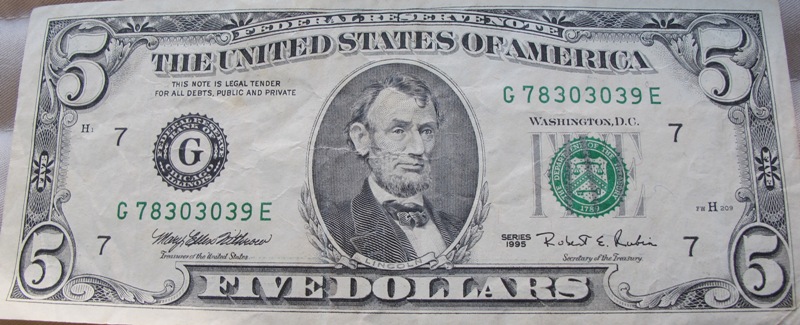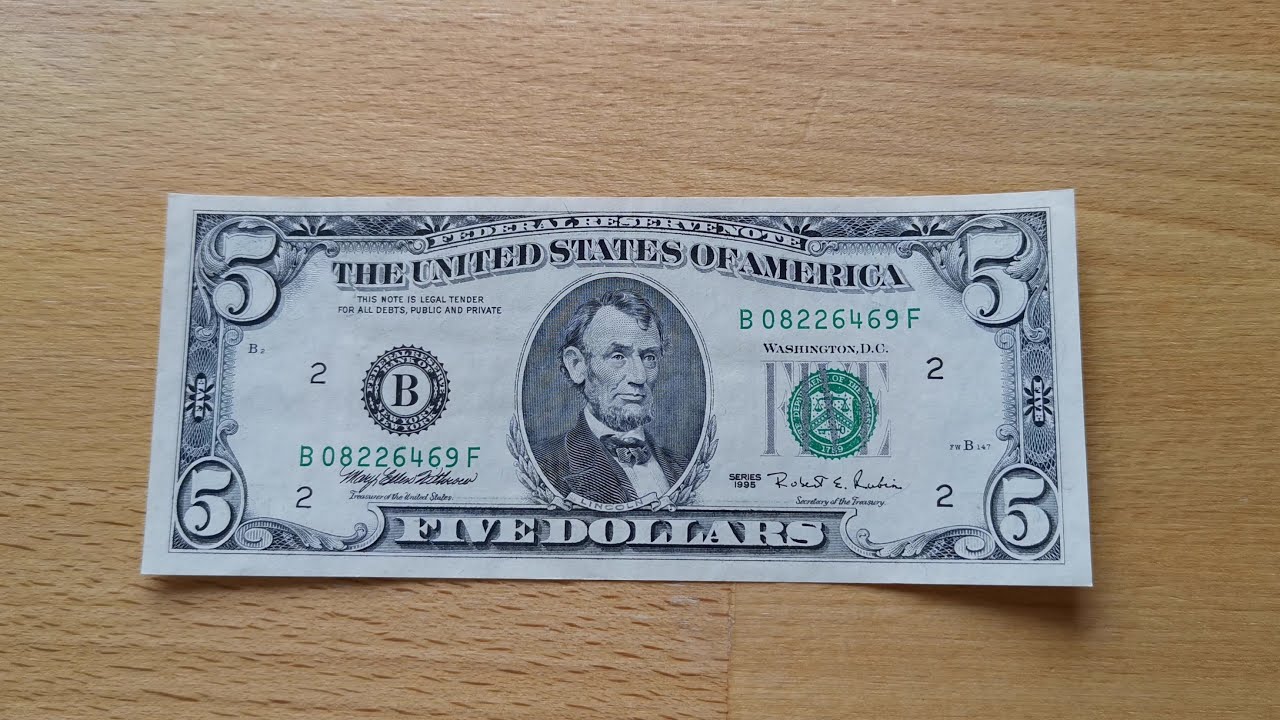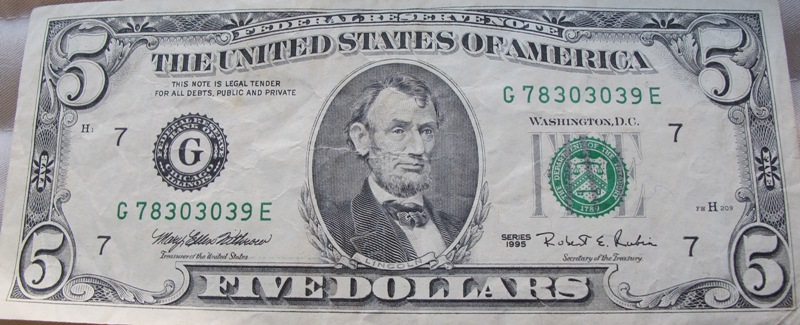The 1995 5 dollar bill value is a topic that often sparks curiosity among collectors and currency enthusiasts. Many individuals wonder if their $5 bill from 1995 is worth more than its face value or if they’ve stumbled upon something particularly rare. In this article, we’ll explore the worth of the 1995 five dollar bill, including its various features, errors, and special editions like star notes.
We will also discuss factors that can affect the value of your bill, as well as how to identify if your 5 dollar bill might be worth more than you think.
Overview Of The 1995 5 Dollar Bill
The 1995 five dollar bill is a part of the U.S. currency series released by the Federal Reserve. It is important to note that most 1995 5 dollar bills in circulation today aren’t going to fetch much more than their face value, particularly if they are in used condition.

However, collectors often search for specific attributes such as rare serial numbers, star notes, or errors that can significantly increase the bill’s worth.
The series of 1995 bills was printed in a design similar to the previous issue, which features a portrait of President Abraham Lincoln on the front, along with the Lincoln Memorial on the reverse. These notes were issued by various Federal Reserve Banks across the U.S., which can influence their value.
What Affects the Value of the 1995 Five Dollar Bill?
The worth of a 1995 $5 bill is primarily determined by its condition, rarity, and special features. Below are some factors that influence the value:
- Condition: Bills that are in better condition tend to fetch higher prices. Notes that have been circulated extensively will likely have folds, creases, and discoloration, lowering their value. A 5 dollar bill in excellent condition (such as uncirculated bills) will be more valuable.
- Star Notes: Star notes are replacement bills that are printed when a bill is damaged during the printing process. These notes are marked with a star symbol at the end of their serial number. As star notes are rarer, they tend to be worth more than regular bills.
- Errors: Bills with printing errors, such as misprints or off-center designs, are highly sought after by collectors. An error on a five dollar bill can make it extremely valuable, depending on the rarity and nature of the mistake.
- Federal Reserve Bank: The issuing bank on a bill can influence its value. Certain banks may issue bills that are rarer, especially if they printed fewer bills. For example, 5 dollar bills from the Federal Reserve Bank of Minneapolis may have a higher value than those from other locations.
The Value Of A 1995 Five Dollar Bill
Most 1995 5 dollar bills in circulated condition are worth only their face value of $5. However, bills in better condition can be sold for more. Below is a breakdown of the approximate value of a 1995 $5 bill based on its condition:
- Very Fine Condition: A bill that has been in circulation but remains relatively crisp with light creases and folds is typically worth around $6. These bills might show signs of wear but retain most of their original appearance.
- Uncirculated Condition (MS 63): Bills that have never been in circulation and maintain their original crispness can sell for around $20. These 5 dollar bills are often well-centered with sharp, clean edges, making them more desirable to collectors.
Star Notes and Their Value
One of the most exciting finds for collectors is a 1995 $5 star note. These notes are more valuable than regular bills due to their rarity. Star notes are issued by the Federal Reserve to replace bills that were damaged during production, and they can be identified by the star symbol that follows the serial number.
The value of a 1995 star note can vary depending on which Federal Reserve Bank issued it.
As you can see, star notes from certain banks, such as those from Boston or Atlanta, can command much higher prices, especially in uncirculated condition.
Collecting and Grading Your 1995 Five Dollar Bill
If you believe your 5 dollar bill might be valuable, it’s important to understand how it’s graded. Bill condition is evaluated using a grading scale, with higher grades indicating a better condition and higher value.

- Very Fine (VF): A bill that has been in circulation but shows minimal wear. It’s not as crisp as a new bill but still maintains much of its original appearance. A 5 dollar bill in this condition may be worth a little more than face value.
- Choice Uncirculated (MS 63): This grade is reserved for bills that show no signs of circulation. These bills are in pristine condition, with sharp, clear printing and no significant flaws. Uncirculated bills are the most sought after by collectors.
If you believe your 1995 5 dollar bill has a significant value, consider having it graded by a professional currency grading service. This will help determine its condition and market value more accurately.
Rare 1995 Five Dollar Bill Errors
While most 1995 five dollar bills are not worth much more than face value, there are a few exceptions. If your bill has printing errors, such as a misaligned serial number or a note that was printed on incorrect paper, it could have significant worth.
These types of errors are rare and can significantly increase the value of a 5 dollar bill.
Common errors to look for include:
- Misprinted bills: A bill that has a noticeable error in its printing, such as the wrong image or text, is a highly prized find for collectors.
- Off-center printing: Bills with significant misalignment or off-center designs are valuable to currency enthusiasts who specialize in printing errors.
If you find an error bill, it’s a good idea to keep it in a protective holder to preserve its condition and value.
Where to Sell Your 1995 Five Dollar Bill
If you have a 1995 5 dollar bill that you believe is worth more than face value, there are several places to sell it:
- Currency dealers: Professional dealers are experts in valuing and buying collectible currency. They can help you determine the value of your bill and offer a fair price.
- Online marketplaces: Websites like eBay provide a platform where collectors can buy and sell bills, including rare $5 bills, star notes, and error notes. When listing your bill, make sure to include clear photos and an accurate description of its condition.
- Coin and currency shows: These events bring together collectors and dealers who specialize in coins and paper money. Attending one of these shows can be a great way to sell your bill and meet other currency enthusiasts.
Conclusion
Most 1995 5 dollar bills are worth around $5 unless they’re in pristine condition or have unique characteristics, such as being a star note or having a printing error. If you find a bill with these rare features, it could be worth significantly more, especially if it’s from a less common issuing Federal Reserve Bank.
So, looking for a 5 dollar bill to add to your collection or you’ve stumbled upon a 1995 five dollar bill in your wallet, knowing how to identify the value can help you make informed decisions. Keep an eye out for star notes, misprints, and bills in excellent condition, as they could be worth more than you think.

